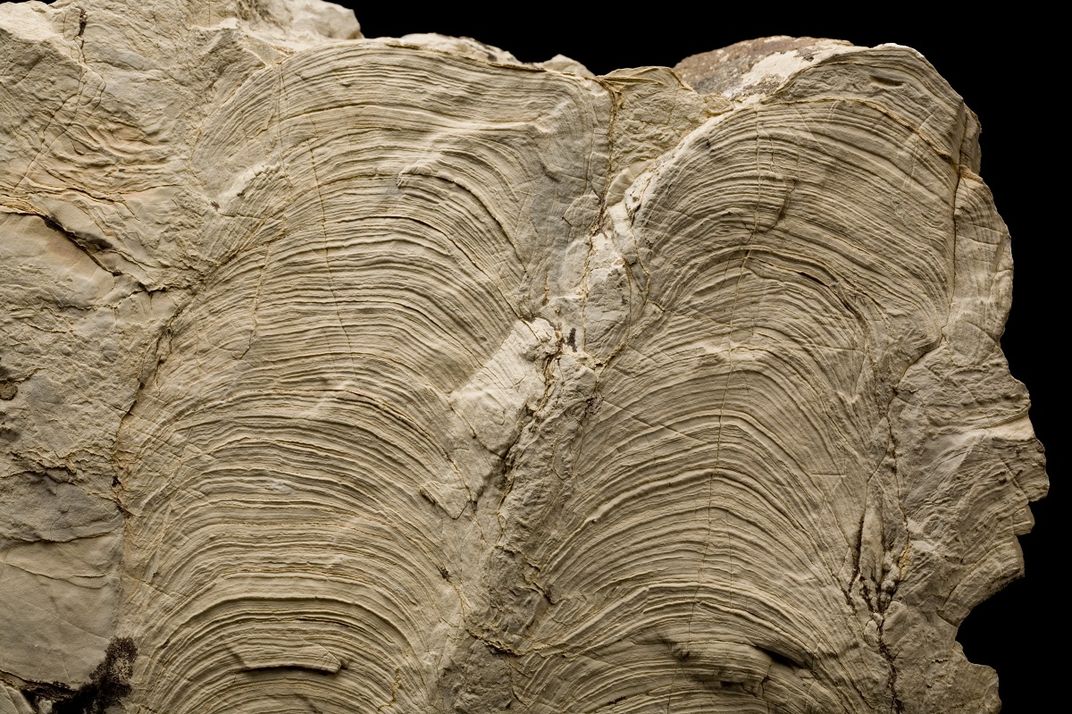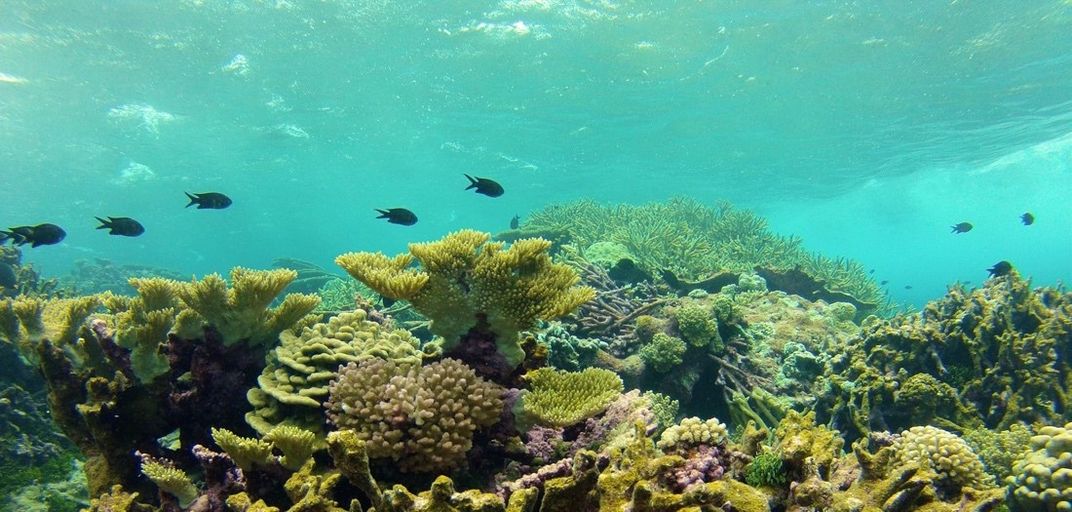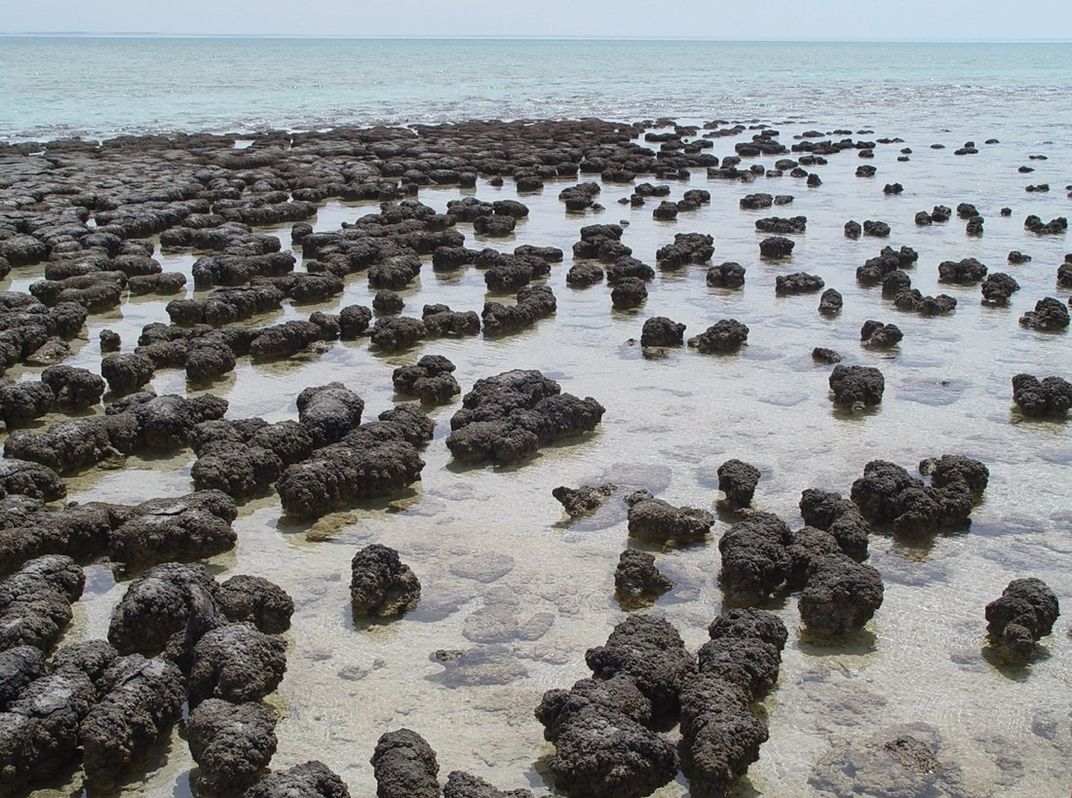NATIONAL MUSEUM OF NATURAL HISTORY
How Biominerals are Stepping Stones for Climate Change Research
Studying biominerals can help geologists learn more about how Earth might transform from climate change in the coming decades
/https://tf-cmsv2-smithsonianmag-media.s3.amazonaws.com/blogging/featured/Yellow_coral_on_green_background.jpg)
Evolving Climate: The Smithsonian is so much more than its world-renowned exhibits and artifacts. It is an organization dedicated to understanding how the past informs the present and future. Once a week, we will show you how the National Museum of Natural History’s seven scientific research departments take lessons from past climate change and apply them to the 21st century and beyond.
Minerals are known for their geologic origins, but they aren’t exclusively made by Earth. For over 3.5 billion years, living organisms have also been creating their own hard parts: biominerals.
“Minerals make up the skeletons, shells and hard parts of a lot of lifeforms. Our bones are biominerals and, thanks to them, we can walk and move,” said Gabriela Farfan, the Coralyn Whitney curator of gems and minerals at the Smithsonian’s National Museum of Natural History.
In addition to helping organisms function in many ways, biominerals hold key information about their surrounding environments. Examining the chemical structures in biomaterials can reveal clues about Earth’s changing climate throughout time.
“The past is a key to the present and future. If we can understand how biomineralization mechanisms operated back then, maybe we can use them as general rules when studying the future,” said Ioan Lascu, a research geologist and Edward and Helen Hintz Secretarial Scholar in the museum’s Department of Mineral Sciences.

As the bacteria continue to get surrounded and covered with minerals created and trapped in the ‘goo’ they’ve produced, they need to get out of these shadows and grow upwards to reach the sun and continue photosynthesizing. As they do, these stacked layers build up and cement into distinct striations that look like thin stacks of pancakes.
“These communities grow throughout time with laminated structures that have built up from sea floor,” said Suosaari. “The structure is distinct, so when you find stromatolites in the rock record, we know that life was once there.”
Ancient stromatolites are not only important for what they can reveal about the past. They also show how these microbes have persisted resiliently for billions of years.
Although uncommon, modern stromatolites exist today in extreme environments, thriving in places where other organisms have difficulty. For example, the largest and most diverse active marine stromatolite assemblage in the world has twice the salinity of the open ocean. The adaptability of microbial communities to live and thrive in extreme environments was critical to their survival and persistence after life exploded during the Cambrian period roughly 540 million years ago.
“Once higher life evolved, the stromatolite-building microbial communities were often grazed away or outcompeted for space,” said Suosaari.
Stromatolites are one example of how biominerals can reveal Earth’s past, but geologists also want to learn more about what might happen in the future. At the museum, they’re doing so by studying how organisms and their biominerals are changing chemically in the present.
Crystallizing clues in corals

As climate change progresses, environments are fluctuating in ways they haven’t before. This is particularly true for the ocean. Right now, the ocean is becoming increasingly acidic because there is more and more carbon dioxide in the atmosphere that it absorbs.
For marine animals, like coral, who use biomineralization to build reefs, ocean acidification is bad news. Coral secretes a biomineral made of a carbonate mineral called aragonite which dissolves faster in water with higher acidity. As ocean acidification increases, reef structures are eroding. This is important to study because coral reefs are a safe haven for marine animals.
By looking at how crystals in reefs have changed, Farfan can start anticipating how they might respond in the future as the ocean chemistry continues to acidify.
“Like tree rings, corals grow in layers over time. By analyzing the mineralogical and chemical signatures of those layers, we can understand what past ocean environments were like,” said Farfan.
Reef biominerals are repositories for information on responses to environmental change. The data they hold can be harnessed to improve predictions about the global climate and marine landscapes in the coming years.
“The environment influences crystal structures and chemistry, so examining crystals can tell us about the environment,” said Farfan.
Biomineral keys to the future

Biomineralization is where past and present connect. Biominerals are snapshots of ocean environments, atmospheric conditions and fluctuations in the biosphere throughout time.
“Once we see how different variables behaved, we can potentially inform climate models to figure out what might happen in the future if certain trends continue,” said Lascu.
Studying these materials can help geologists learn more about how Earth might transform from climate change in the coming decades.
“We have temperature, pressure and physical conditions in the ocean that are important for making biominerals. Once we understand how things like these are interrelated, then we can start thinking about what that means for future climate change,” said Farfan.
Stay tuned for the next story in the Evolving Climate series on Apr. 29. We will show you how researchers in the museum’s Department of Paleobiology are using plant fossils to reconstruct Earth’s past climate and inform climate change research today.
Related Stories:
New Way to Study Magnetic Fossils Could Help Unearth Their Origins
What Antarctic Meteorites Tell Us About Earth’s Origins
Meet the Scientist Using Fossils to Predict Future Extinctions
What an Asteroid Could Tell Us About Ancient Earth
Get to Know the Scientist Reconstructing Past Ocean Temperatures

